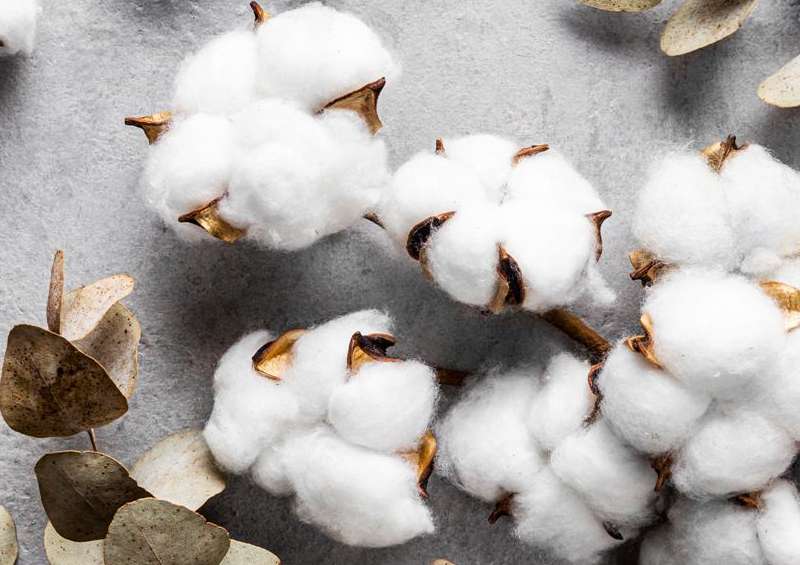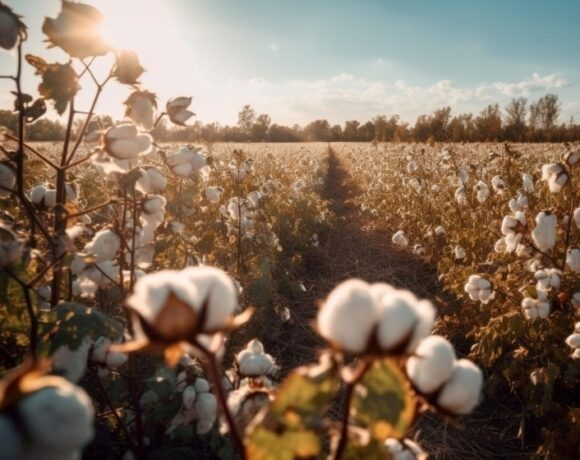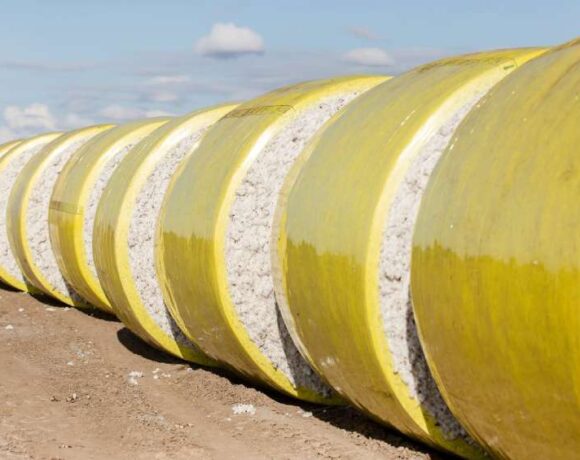India’s Cotton Production Gallops, While Pakistan’s Lags

Until the 1990s, India lagged behind Pakistan in cotton production. However, today, India has not only surpassed Pakistan but also topped the global ranking.
Indian cotton production will be 34.7 million bales of cotton in the 2023-24 season, accounting for 25 percent of the world’s total production.
While Pakistan’s production remains at barely 8-9 million bales, making it the fifth largest producer with a share of only 4-5 percent in global cotton production.
Additionally, India has solid plans to increase its cotton production to over 40 million bales by 2030, while Pakistan faces uncertainty due to factors affecting cotton cultivation and production.
The Indus River System Authority (IRSA) report indicates a 35 percent water shortage this year, leading Pakistan’s Punjab to reduce the target for cotton cultivation from 5 million acres to 4 million acres.
Additionally, the area dedicated to sugarcane and paddy crops is rapidly increasing in cotton-cultivated areas and the Pakistan government has also not yet announced the support price for cotton.
In contrast, India has fixed support prices for 31 crops, while Pakistan has not fixed the support price for any crop except wheat or sugarcane.
“Today, the sectors with the potential to rescue Pakistan from IMF dependency are cotton research institutes and the textile industry,” Business Recorder reported.
Currently, India allocates 0.4 percent of its total GDP to research and development, while Pakistan spends less than half of that. Without investing in research, Pakistan cannot achieve the desired results.
Today, the Pakistan Central Cotton Committee (PCCC), the largest cotton research organization under the Ministry of National Food Security and Research, is in a serious financial and administrative crisis.
Currently, the situation is dire. About 1,100 agricultural scientists and other employees have not received salaries and pensions for the last 22 months, but their plight is being ignored.
The financial resources of the cotton committee depend on a cotton cess of PAK Rs 50 per bale of cotton, which was set in 2012.
However, even in 2024, the cess rate remains the same. It’s now imperative to increase it to around PAK Rs 50 to 200 rupees per bale.
Unfortunately, 80 percent of Pakistan textile industry has stopped paying the cotton cess of PAK Rs 50 per bale since 2016.
The Government of Pakistan needs to take immediate action on this matter. They should seal the defaulting textile mills and hold tax evaders accountable.
Currently, the textile industry owes more than 3 billion rupees in cotton cess to the cotton committee.
The government should condition the import and export of the textile industry on the payment of cotton cess and should not issue NOCs (No Objection Certificates) to mills until they pay the cotton cess.
The Cotton Committee has delivered three bumper crops of cotton in the history of Pakistan. In the most near and last bumper crop year, 2014-15, Pakistan harvested more than 14 million bales of cotton.
However, since the textile industry stopped paying cotton cess, cotton research in Pakistan has been severely affected, leading to a rapid decline in cotton production.
And so now, Pakistan’s cotton output has dropped from 14 million bales to barely 8 to 9 million bales.
Currently, the Pakistani textile industry consumes 16 million bales of cotton annually, requiring the country to import billions of dollars’ worth of cotton each year.
The government should establish a national commission immediately to investigate the reasons for the decline in cotton production.
In India, the government provides numerous subsidies and incentives to cotton farmers for agricultural inputs and has invested in irrigation infrastructure and modern irrigation systems.
Quality cotton seeds that yield high-quality produce are readily available, along with modern farming machinery in India.
Research and development in cotton farming are prioritized, and electricity is cheap. Prices of seeds, fertilizers, and pesticides are reasonable.
Good market access, favourable government policies, and diverse climate and geography contribute to cotton growth.
Government initiatives like the National Food Security Mission and the Cotton Mission help farmers adopt better practices and improve production.
Additionally, private sector investment in research and development is boosting growth and efficiency.














